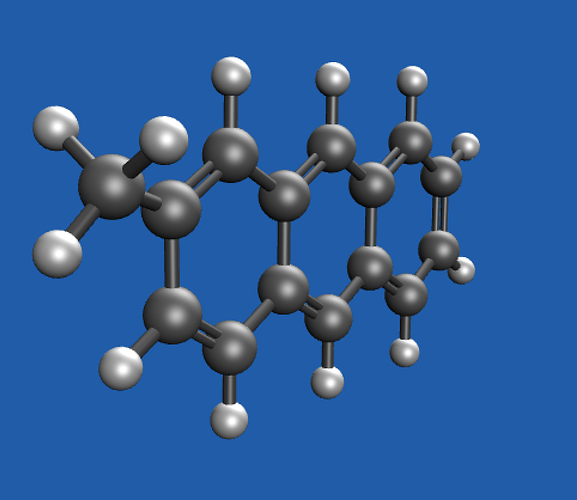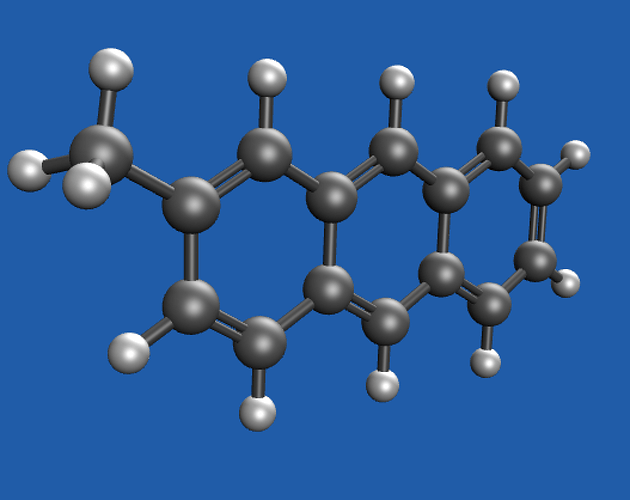Hi,
I am trying to calculate the vibrational frequencies of the ground state for 2-methylAnthracene and I couldn’t get rid of the imaginary frequency. I tried some commonly used trics such as tightening the convergence criteria, using stability analysis and tweaking the geometry a bit along with the complex normal mode but that didn’t help.
Here is my input file:
$molecule
0 1
C 0.8681005 0.5236808 0.0000397
C -0.2907264 1.3131490 0.0000945
H -0.1941351 2.4002659 0.0001735
C -1.5730942 0.7421661 0.0000498
C 2.1824337 1.0948542 0.0000893
H 2.2716681 2.1828136 0.0002187
C 3.3138750 0.3145431 0.0000260
C 3.1662560 -1.1133953 -0.0000489
H 4.0640240 -1.7336604 -0.0000539
C 1.9303747 -1.7046712 -0.0000956
H 1.8388077 -2.7914802 -0.0001248
C 0.7355414 -0.9147021 -0.0000675
C -0.5435393 -1.4871912 -0.0000997
H -0.6400596 -2.5742783 -0.0001685
C -1.7037944 -0.6975034 -0.0000465
C -2.7635610 1.5378912 0.0001039
H -2.6653469 2.6241624 0.0001757
C -4.0046880 0.9512522 0.0000726
H -4.9020261 1.5702941 0.0001186
C -4.1334131 -0.4708129 -0.0000197
H -5.1272312 -0.9187378 -0.0000419
C -3.0164716 -1.2687908 -0.0000772
H -3.1126252 -2.3552333 -0.0001475
C 4.6984263 0.9113910 -0.0001720
H 4.6419423 2.0353429 0.6390515
H 5.0499419 1.1293476 -1.1342601
H 5.4824402 0.175325 0.6039344
$end
$rem
BASIS = aug-cc-pVDZ
GEOM_OPT_MAX_STEP_SIZE = 999
GEOM_OPT_TOL_DISPLACEMENT = 120
GEOM_OPT_TOL_ENERGY = 1
GEOM_OPT_TOL_GRADIENT = 10
GUI = 2
INTERNAL_STABILITY = 1
JOB_TYPE = Optimization
MEM_STATIC = 2000
MEM_TOTAL = 80000
METHOD = B3LYP
MOLDEN_FORMAT = 1
PURECART = 2222
SCF_CONVERGENCE = 8
SYM_IGNORE = 1
THRESH = 14
$end
@@@
$comment
Freq
$end
$molecule
read
$end
$rem
BASIS = cc-pVDZ
GUI = 2
JOB_TYPE = Frequency
MEM_STATIC = 2000
MEM_TOTAL = 80000
METHOD = B3LYP
MOLDEN_FORMAT = 1
SCF_CONVERGENCE = 8
SYM_IGNORE = 1
$end
Any suggestion is very helpful. Thank you

